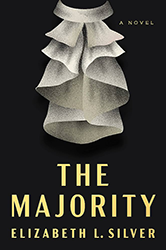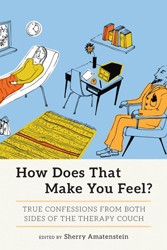When her six-week-old daughter, Abby, develops what appear to be seizures, Elizabeth L. Silver and her physician husband bring her to the emergency room. Soon a CT scan reveals a massive bleed — a stroke — and tiny Abby enters an extended and bewildering period of medical activity. Anxiety continues to inform each moment in the couple’s lives. The mental trauma resulting from the very real possibility that a beloved baby may die is difficult to articulate. Nonetheless, Silver does so — masterfully — in her book The Tincture of Time: A Memoir of (Medical) Uncertainty.
While other parents have experienced similar terrifying situations, their stories remain largely unknown. Silver, a writer and lawyer, copes with the stress of her family’s trauma by documenting the experience. “The only way I could make sense of anything,” she writes, “was to pull out a notepad inside my tiny room in the NICCU and write.” Readers reap the benefit of Silver’s laser-like focus on her story as she blends dialogue and description into a narrative as gripping as any thriller.
Silver muses about the tyranny of the unknowable in general, and within the medical establishment in particular. As Abby undergoes procedure after procedure, her mother continues to write, tackling the topics of blood, fever, and pain — recurring motifs in the emergency room and NICCU. Silver also explores the uncertainty of religion (“Doesn’t religion actually give people the illusion of certainty?” asks a friend), and considers the theme through literature via Hamlet and Waiting for Godot.
If a topic can be viewed through the prism of uncertainty, Silver will hold it to the light, turn it this way and that, then document her vision. Sometimes the result feels a bit forced, but there are moments of great clarity in her writing, as when she describes the comfort she derives from a group of Jewish women who gather to bake challah and pray for Abby: “When these forty people come together in a home that isn’t mine, with voices and faces I do not recognize, and settle on a single note, I begin to weep.”
The strength of Tincture is its close attention to detail, which immerses the reader in events as they unfold. We are there in the emergency room and the NICCU. We agonize with Silver and her husband over Abby’s mysterious affliction in chapter after chapter.
Ultimately, after two years of ongoing assessment, Abby is “released,” and declared completely healthy, after a final neurological evaluation. Happy as we are for the family, the inevitable downshift in pacing (the “tincture of time” taking effect) makes the second half of the book slightly less compelling. The old journalism adage “if it bleeds, it leads,” comes to mind, for blood — as it affects a helpless infant — is precisely what grabs and holds the reader’s attention when Tincture begins. With Abby’s brain bleed staunched, and eventual recovery evident, the story’s urgency slows.
Tincture will resonate for any parent who has had a desperately sick, hospitalized child — its ultimate message of hope providing a healing balm. And readers don’t have to be parents to relate to this engaging story and thoughtful, thorough consideration of uncertainty within and outside the medical establishment. As Silver asks, “Because Abby has narrowly escaped a statistic, the book ends with joy, but does it take away from any of the emotions experienced while reading it?” Readers will agree that it certainly does not.
Amy Spungen, a freelance editor and writer, has a BS in journalism from Virginia Commonwealth University and an MA in English from Northwestern University. She lives near Chicago in Highland Park, Illinois.




